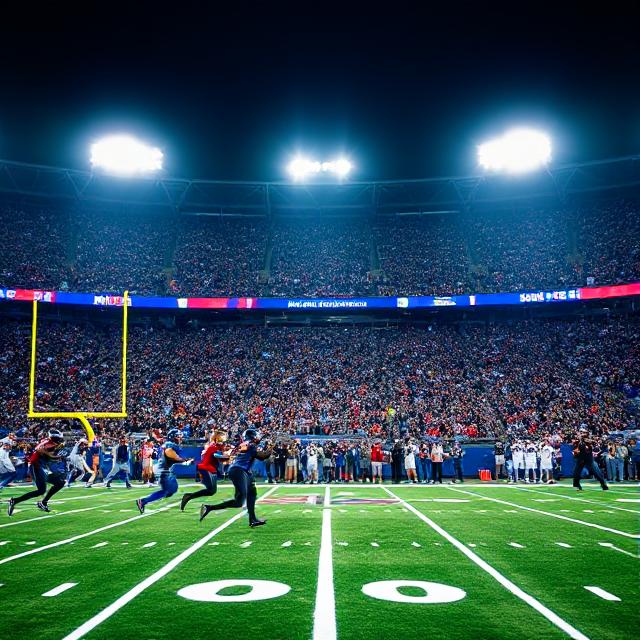Infomation to NFL
The National Football League (NFL) stands as one of the most popular and influential sports leagues in the world. With a history dating back over a century, the NFL has evolved from a modest collection of regional teams into a global phenomenon that captivates millions of fans annually. From its origins to its cultural impact, the NFL’s significance extends beyond the gridiron, shaping social, economic, and entertainment landscapes.
Origins and Evolution
The NFL was founded in 1920 as the American Professional Football Association (APFA), consisting of 10 teams primarily based in the Midwest. In 1922, it rebranded as the National Football League, setting the stage for decades of growth. Early on, the league faced competition from other football organizations, but its stability, professionalism, and strategic expansion helped it emerge as the premier professional football league in the United States.
Throughout the 20th century, the NFL experienced significant milestones. The merger with the American Football League (AFL) in 1970 unified the sport’s top teams and led to a more structured league format. The Super Bowl, first played in 1967, became the league’s marquee event, symbolizing the championship and serving as a cultural spectacle. Over the years, the league expanded to include 32 teams, divided into two conferences—the NFC and AFC—each with four divisions.
The Structure and Competition
The NFL’s organizational structure is designed to foster intense competition and regional rivalries. Each team plays 17 regular-season games over 18 weeks, culminating in the playoffs, which feature 14 teams vying for the coveted Super Bowl title. The postseason includes single-elimination rounds, leading to the conference championships and ultimately the Super Bowl.
The league emphasizes parity, often citing the “Any Given Sunday” mantra, suggesting that any team can win on any given game day. This competitive balance is maintained through a complex system of drafts, salary caps, and free agency rules, which aim to prevent wealthier or more successful franchises from dominating indefinitely.
Cultural Impact and Popularity
The NFL’s influence transcends the sport itself. The league’s games are cultural events, often accompanied by elaborate halftime shows, celebrity appearances, and widespread media coverage. The Super Bowl, in particular, has become an unofficial American holiday, drawing viewership numbers that surpass those of any other sporting event worldwide.
In addition to entertainment, the NFL has played a role in social issues, most notably through players’ activism. The protests initiated by Colin Kaepernick in 2016, where players kneeled during the national anthem to raise awareness about racial injustice, sparked national conversations about patriotism, free speech, and social justice. These actions exemplify how the league and its players can influence societal issues.
The NFL also has a profound economic footprint. It generates billions in revenue through ticket sales, merchandise, broadcasting rights, and sponsorship deals. The league’s television contracts with major networks like CBS, NBC, ESPN, and Fox are among the most lucrative in sports history, providing a steady stream of income that fuels team operations and league initiatives.
Challenges and Controversies
Despite its success, the NFL has faced numerous challenges. Player safety has been a major concern, especially regarding concussions and chronic traumatic encephalopathy (CTE). As research illuminated the long-term effects of repeated head injuries, the league responded by implementing stricter rules, improving equipment, and funding research efforts.
Off-field controversies have also impacted the league’s reputation. Issues surrounding player conduct, domestic violence, and allegations of discrimination have led to public relations crises. The league has taken steps to improve its image, including stricter policies and increased community outreach.
Furthermore, the league has had to navigate the complexities of social and political debates, including protests and calls for racial justice. Balancing support for free expression with maintaining a unified brand has been a delicate task for NFL leadership.
The Future of the NFL
Looking ahead, the NFL faces both opportunities and challenges. Technological advancements, such as virtual reality, enhanced streaming services, and social media platforms, offer new avenues for fan engagement. The league is also exploring international markets, with games played in London, Mexico City, and other global locations, aiming to grow its worldwide fan base.
However, addressing ongoing concerns about player health, league transparency, and social responsibility will be vital. As sports fans become more socially conscious, the NFL’s ability to adapt and demonstrate leadership on these issues will influence its continued relevance.
Conclusion
The N F L’s journey from a regional football league to a global cultural powerhouse is remarkable. Its rich history, competitive structure, and cultural significance have cemented its place in American society and beyond. While it navigates challenges related to health, social issues, and technological change, the league’s resilience and ability to evolve suggest that it will remain a central figure in sports and entertainment for years to come.
As the NFL continues to grow and adapt, its role as a platform for community, competition, and culture will undoubtedly endure, making it not just a sports league but a defining element of modern American life.





